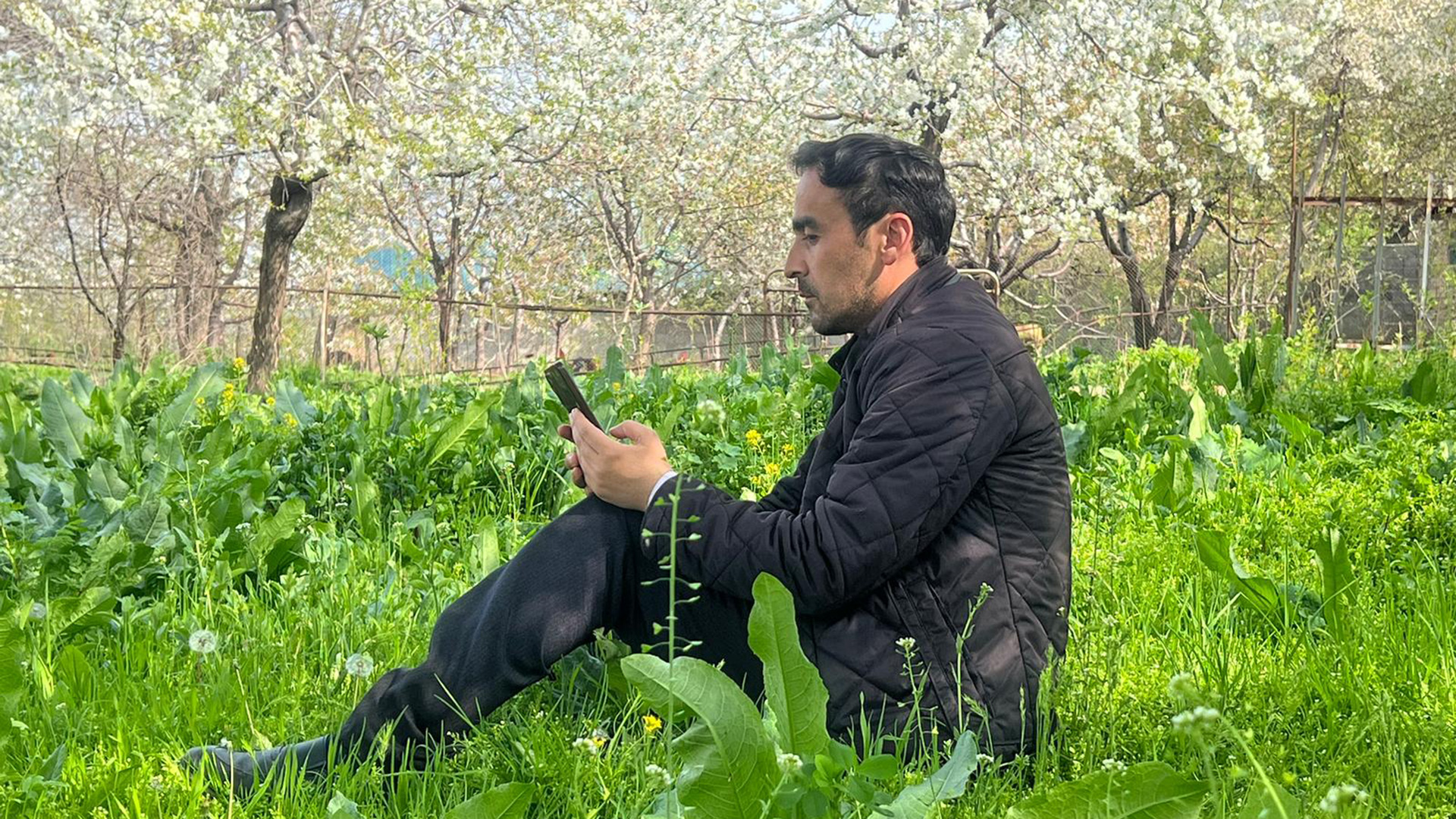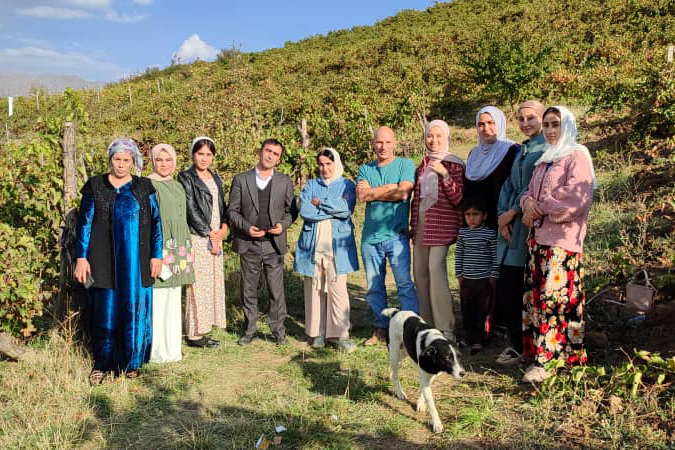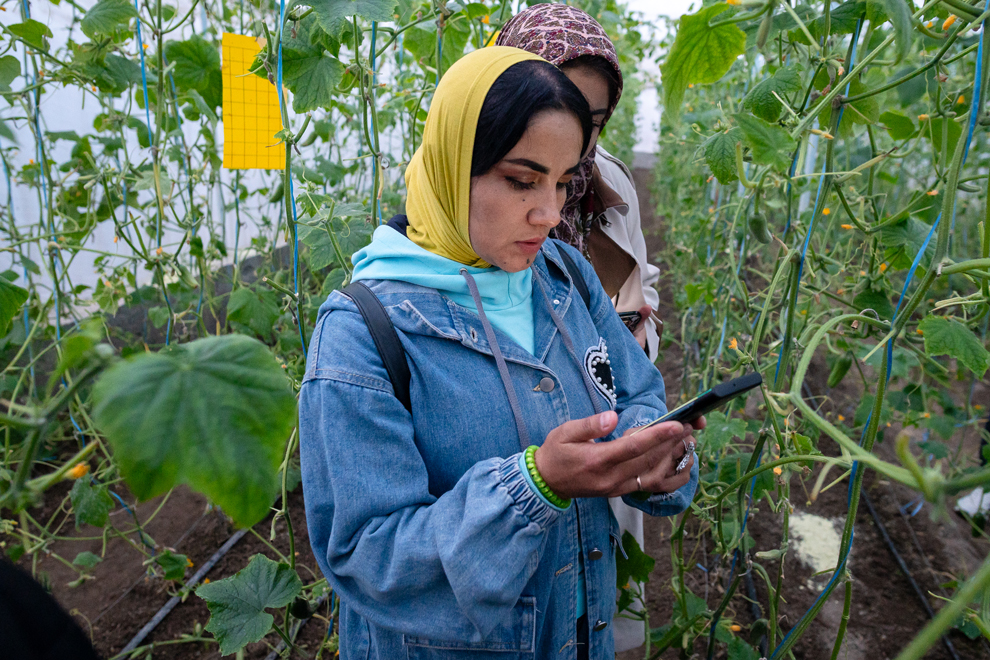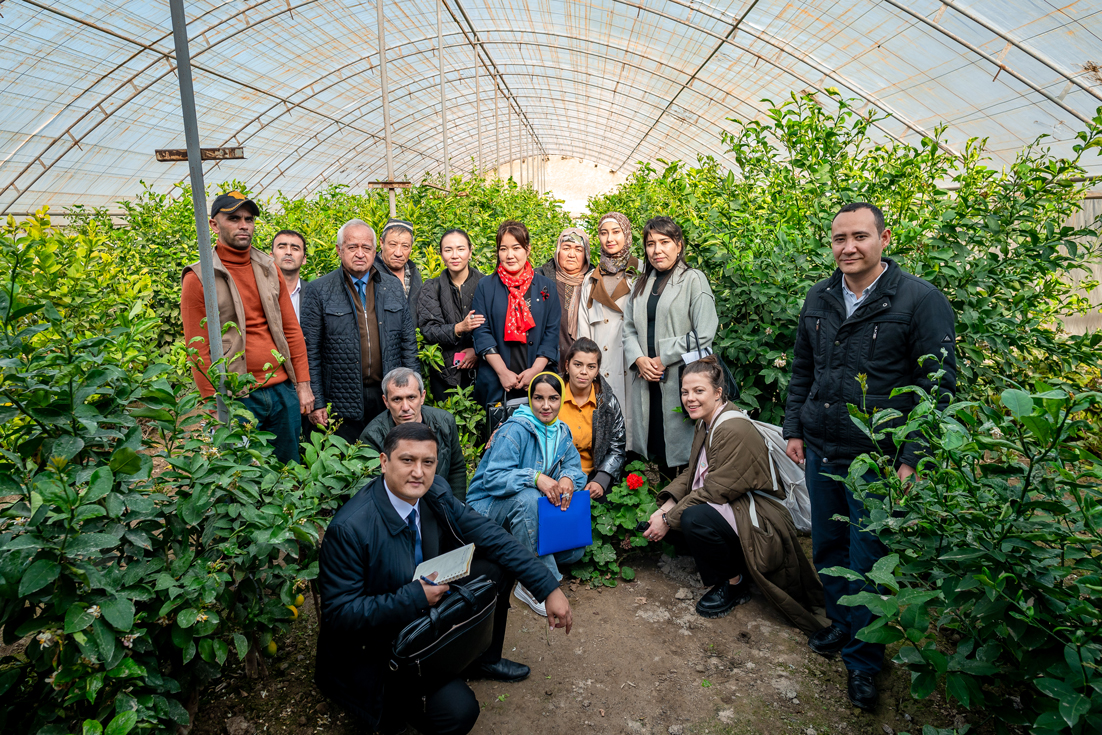
A human booster for digital innovation in Tajikistan
One savvy teacher helps fellow farmers harness information technology
Khudoidod Rasulov, a farmer and information technologist at heart, has been the voice and community mobiliser for FAO’s Digital Villages Initiative in Lolazor, Tajikistan. © Maruf Ashurov
13/05/2024
Khudoidod Rasulov’s vocation as a teacher and his interest in information technology from an early age make him a uniquely valuable figure in his village of Lolazor some 30 kilometers east of Tajikistan’s capital, Dushanbe. He’s the go-to person whenever fellow villagers need information to help better cultivate their orchards and market their produce online. So it’s not surprising that he’s played a key role as the Food and Agriculture Organization of the United Nations (FAO) has implemented its Digital Villages Initiative in Lolazor.
“I generally have a passion to learn about mobile devices … and as a teacher I have free time after work to help fellow villagers,” explains Khudoidod.
“Digital technology helps in the lives of farmers to facilitate solutions to agricultural problems and access the necessary information for farm management.”
Like most of the villagers here, Khudoidod and his family are also farmers. But before they decide to head to the fields for the day, Khudoidod checks the weather forecast on his smartphone to see what the day holds in store.
Then, after he finishes teaching his classes at the local primary school in the afternoon, he heads to his plot of land to help till the soil and weed between the rows of cucumbers, tomatoes and potatoes. He then waters the crops and prunes the apple, cherry and peach trees.
Whether for his own family or the other villagers, Khudoidod is constantly using the internet in general and agriculture platforms in particular to “recommend the best technologies for growing crops and fruits”. He describes how “by analyzing agriculture websites and platforms I recommend to get better seeds and mineral fertilizers for growing vegetables and fruits, aiming to receive high harvests of the vegetables and fruits. Through the use of digital technologies, I am introducing advances in agricultural activities in the village.”
Many of these skills were acquired through the four training sessions on digital technology provided by FAO under the Digital Villages Initiative. But there was much more as well. Khudoidod also learned how to advertise his family’s and other villagers’ agricultural products on social media platforms. He additionally mastered an application which provides farmers with complete information on planning field activities.
This digital technology helps us with “timely execution of field work such as information on seedlings, fruits and vegetables and other types of products, planting time and also the time of using mineral fertilizers in growing fruits and vegetables,” Khudoidod explains.


Villagers of Lolazor are using digital technology for marketing products online and for maintaining greenhouses. ©FAO/Didor Sadulloev (left/top) and ©FAO/Daniil Dolidze (right/bottom)
Previously there were many farming challenges such as when to use mineral fertilizers, when to irrigate and to treat against insects and diseases for which villagers could have done with expert advice but there was none at hand, he says. Now, information technology has brought the answers to their fingertips.
When a fellow villager, Farahnoz Ganieva, has a question on one of the applications taught during digital skills training, Khudoidod walks her through it: “… Let's take a look at the grape orchard section…. Notice the ‘costs’ and ‘benefits’ icons. These will help you track your expenses and earnings. By inputting data about your orchard, you can make an approximate prediction of the costs involved and the potential profits.”
He also played an active role in the project acting as a community mobiliser. Khudoidod was elected as the administrator of a community Telegram channel known as "Digital Lolazor". This channel, through which villagers exchange information on their daily farming challenges and solutions, was created by the instructor during the digital training.

Khudoidod and other Lolazor villagers visit the Fergana Valley in Uzbekistan to share experiences and learn best practices. Uzbekistan is another country in Central Asia where FAO is implementing the Digital Villages Initiative. ©FAO/Daniil Dolidze
But his dreams extend even further. After the training, Khudoidod, who lives with disability, aspires to open his own technology shop and provide training sessions to improve the digital literacy of his community members and neighboring communities.
He reflects on a three-day study visit to the Fergana Valley in Uzbekistan, another country in Central Asia where FAO is implementing the Digital Villages Initiative. He says he had the opportunity to meet wonderful people who have now become his friends.
The experience, particularly the well-organized greenhouse for growing lemons, bristling with smart sensors based on the Internet of Things technology, left him feeling full of zest and hope for the future in his community. With his skills and willingness to help fellow villagers get the benefits brought by digital innovation, Khudoidod is an important force in shaping that future.
Related links
Learn more

